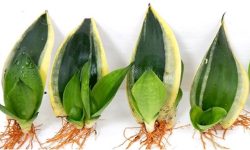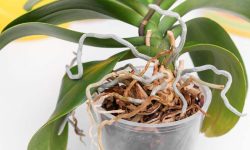Orchids are often thought of as parasites, but not all of them are. In fact, most orchids are epiphytes, which means they grow on other plants but don’t take anything from them. However, there are a few orchid species that are true parasites.
These orchids attach themselves to the roots of other plants and steal water and nutrients.
Orchids have a reputation for being finicky, but did you know that some species are actually parasites? That’s right – these fascinating flowers get the majority of their nutrients by attaching themselves to other plants and leeching off of them. While this might sound like a recipe for disaster, many orchids are actually quite beautiful and make excellent houseplants.
If you’re thinking about adding one to your collection, here’s what you need to know about parasitic orchids.
Most orchids that parasitize other plants do so by attaching themselves to tree roots. They send out special structures called haustoria that penetrate the host plant’s tissues and absorb water and nutrients.
This arrangement is generally beneficial for both parties – the orchid gets the nourishment it needs to survive, and the tree isn’t harmed in any significant way. In fact, some studies have shown that trees with parasitic orchids actually grow faster than those without!
Not all orchids are parasites, however.
Many species grow in epiphytic habitats (like on branches or rocks) and get their nutrients from the air and rainwater. These “air plants” don’t harm their hosts at all and can actually be quite helpful in preventing erosion.
So, are all orchids parasites?
No – but some definitely are! If you’re interested in growing these unique plants, just be sure to do your research beforehand so you can provide them with the care they need to thrive.
In Search of a Parasitic Orchid
Are Orchids Parasitic Or Symbiotic?
Orchids are epiphytic plants, which means that they grow on other plants or objects. They often attach themselves to tree branches or rocks using their aerial roots. Orchids get their nutrients and moisture from the air and rain, and they do not typically harm the host plant.
In fact, many people consider them to be beneficial to the host plant because they help it retain moisture.
Why Do People Think Orchids are Parasites?
Orchids are a type of flower that many people believe to be parasitic. The roots of an orchid typically grow on other plants or trees, which has led to the misconception that they are parasites. However, this is not the case!
Orchids actually rely on a symbiotic relationship with certain fungi in order to grow and thrive. These fungi provide essential nutrients to the orchids, while the orchids help to aerate and improve drainage for the fungi.
What are 5 Examples of Parasitic Plants?
Parasitic plants are those that derive some or all of their nutrients from other living plants. There are many different types of parasitic plant, but here are five examples:
1. Mistletoe is a well-known example of a parasitic plant.
It grows on the branches of trees and derives its water and nutrients from the host tree.
2. Dodder is another common parasite, which twines itself around other plants in order to reach their leaves and stems. It can affect a range of hosts, including crops such as tomatoes and potatoes.
3. Broomrape is another stem parasitize, which attaches itself to the base of other plants in order to steal their water and minerals. This can be harmful to the host plant, as it can stunt its growth or even kill it outright.
4. Some species of orchid are also parasitic, attaching themselves to the roots of trees in order to get the moisture and nutrients they need.
However, unlike most parasites, they do not typically cause any harm to their host plant.
5 finally, mistletoe isn’t just found on trees – there’s also a kind that lives off cacti!
Is Epiphytic Orchid a Parasite?
Epiphytic orchids are not parasites, but they do rely on other plants for support. These orchids grow on tree branches or other plants, using them for physical support. They don’t take nourishment from their host plant, but they do benefit from the moisture and nutrients that come from rainwater and decaying leaves.
While epiphytic orchids don’t harm their host plants, they can become a nuisance if they grow out of control.

Credit: www.aos.org
Orchids are Epiphytes
Orchids are one of the most popular houseplants, and for good reason! They’re easy to care for, long-lived, and come in a wide variety of colors, shapes, and sizes. But what exactly is an orchid?
Orchids are actually epiphytes—plants that grow on other plants or objects. In their natural habitat, they can be found growing on tree branches or rocks. Most orchids sold in stores are terrestrial orchids, which means they grow in soil; however, there are also many beautiful epiphytic orchids available.
If you’re interested in growing an orchid yourself, it’s important to choose the right species for your home. Some orchids require high humidity and lots of light, while others prefer moderate conditions. Once you’ve selected a healthy plant from a reputable source, you can pot it in well-draining potting mix and water it regularly.
With a little patience and care, your orchid will thrive—and provide you with years of enjoyment!
Are Orchids Saprophytes
Orchids are a fascinating group of plants, and one of the things that makes them so interesting is their wide range of habitats. While many orchids are epiphytes, growing on trees or other plants, some are terrestrial, and still others are lithophytes, growing on rocks. And then there are the saprophytic orchids, which get their nutrients from decomposing organic matter.
The vast majority of orchids you’ll find for sale in nurseries and stores are epiphytic, as these tend to be the easiest to grow. But if you’re looking for something a little different, a saprophytic orchid might be just the thing. There are several hundred species in this group, including some well-known ones such as lady’s slipper (Cypripedium) and putty root (Aplectrum).
Saprophytic orchids typically have large underground storage organs called rhizomes or tubers. These store water and nutrients that the plant can draw on when conditions aren’t ideal for growth. The leaves of saprophytic orchids are often small and inconspicuous since they don’t need to perform much photosynthesis; instead, they focus their energy on producing flowers.
If you’re interested in trying your hand at growing a saprophytic orchid, be aware that they can be somewhat challenging. They generally prefer cooler temperatures than most other types of Orchids , so if you live in a warm climate you may need to provide some artificial cooling (such as with a fan). They also require high humidity and plenty of air circulation around their roots.
But if you can provide these conditions, you may be rewarded with some truly unusual and beautiful blooms!
Are Orchids Poisonous
Orchids are one of the most beautiful and popular flowers in the world. They come in many different colors, shapes, and sizes and can be found in nearly every country on earth. But did you know that some species of orchids are actually poisonous?
While most orchids are safe to have around the house, there are a few species that contain toxins that can cause skin irritation, stomach upset, and even death if ingested. The majority of these dangerous orchids are native to South America, so it’s important to be aware of which ones to avoid if you’re planning a trip to this part of the world.
Here is a list of some of the most poisonous orchids:
1. Epidendrum Radicans – This orchid is also known as the “Devil’s Tongue” due to its long, red petals that resemble a tongue. It is native to Peru and Ecuador and contains toxins that can cause skin irritation and stomach upsets. If ingested, it can also lead to vomiting and diarrhea.
2. Brugmansia Sudamericana – Also known as the “Angel’s Trumpet”, this plant is native to Colombia, Ecuador, Peru, Bolivia, Argentina, Chile, Uruguay, Paraguay, Brazil and Venezuela. All parts of this plant are poisonous if ingested including the flowers which contain scopolamine alkaloids that can cause hallucinations leading to delirium and death. Symptoms also include dry mouth , dilated pupils , blurred vision , fast heart rate , sweating , flushing , confusion , agitation , seizures , coma .
Ingesting just two tablespoons worth of any part of this plant could be fatal for an adult human .
Conclusion
No, not all orchids are parasites. Some orchids grow on trees, while others grow in the ground. The vast majority of orchids are epiphytes, which means they live on other plants but don’t take anything from them.
A few orchids are lithophytes and grow on rocks. There are even a couple of terrestrial species that grow in the ground like most other plants.






